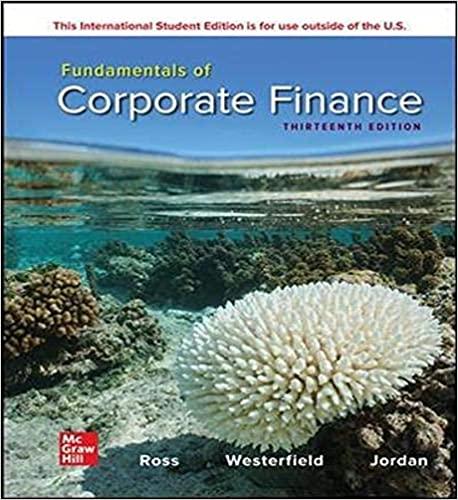S&S Air is preparing its first public securities offering. In consultation with Renata Harper of underwriter Raines
Question:
S&S Air is preparing its first public securities offering. In consultation with Renata Harper of underwriter Raines and Warren, Chris Guthrie decided that a convertible bond with a 20-year maturity was the way to go. He met the owners, Mark and Todd, and presented his analysis of the convertible bond issue. Because the company is not publicly traded, Chris looked at comparable publicly traded companies and determined that the average PE ratio for the industry is 14.5. Earnings per share for the company are $1.30. With this in mind, Chris has suggested a conversion price of $25 per share.
Several days later, Todd, Mark, and Chris met again to discuss the potential bond issue. Both Todd and Mark had researched convertible bonds and they had some questions for Chris. Todd began by asking Chris if the convertible bond issue would have a lower coupon rate than a comparable bond without a conversion feature. Chris informed him that a par value convertible bond issue would require a 4 percent coupon rate with a conversion value of $800, while a plain vanilla bond would have a 7 percent coupon rate. Todd nodded in agreement and explained that the convertible bonds are a win-win form of financing. He further explained that if the value of the company stock did not rise above the conversion price, the company would be issuing debt at a cost below the market rate (4 percent instead of 7 percent). If the company’s stock did rise to the conversion value, on the other hand, the company would be effectively issuing stock at a price above the current value.
Mark immediately disagreed, saying that convertible bonds are a no-win form of financing. He argued that if the value of the company stock were to rise to more than $25, the company would be forced to sell stock at the conversion price. This means the new shareholders—in other words, those who bought the convertible bonds—would benefit from a bargain price. Put another way, if the company prospers, it would have been better to have issued straight debt so that the gains would not be shared.
Chris has gone back to Renata for help. As Renata’s assistant, you’ve been asked to prepare another memo answering the following questions.
QUESTIONS
1. Why do you think Chris is suggesting a conversion price of $25? Given that the company is not publicly traded, does it even make sense to talk about a conversion price?
2. Is there anything wrong with Todd’s argument that it is cheaper to issue a bond with a convertible feature because the required coupon is lower?
3. Is there anything wrong with Mark’s argument that a convertible bond is a bad idea because it allows new shareholders to participate in gains made by the company?
4. How can you reconcile the arguments made by Todd and Mark?
5. In the course of the debate, a question comes up concerning whether or not the bonds should have an ordinary (not make-whole) call feature. Chris confuses everybody by stating, “The call feature lets S&S Air force conversion, thereby minimizing the problem that Mark has identified.” What is he talking about? Is he making sense?
Step by Step Answer:

Fundamentals Of Corporate Finance
ISBN: 9781265553609
13th Edition
Authors: Stephen Ross, Randolph Westerfield, Bradford Jordan





